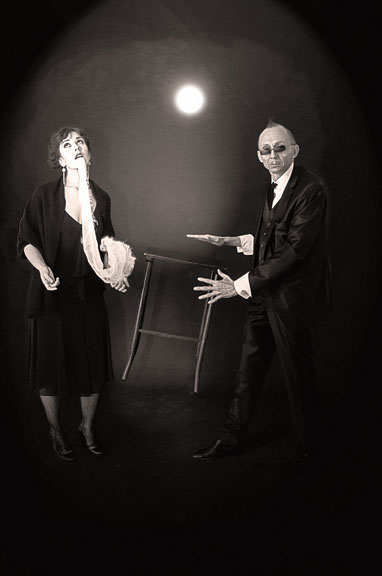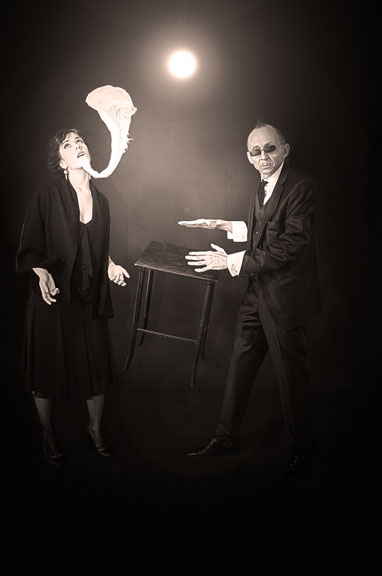The objective world is defined by representations, and information systems impact the coordinates of subjective reality. What can artistic engagement achieve in this context? Can artistic practice that includes new digital media do more than promote technological advances or provide an affective stimulus in aestheticized production cycles? In this era of creative industries, can there be a type of artistic production that not only stimulates the cultural palate but also represents a critical instance of reflective, intellectual work? Is art a lifestyle accessory above all, or does it hold potential for critical analysis?
The Machinery of Knowledge Production
Electronic networks and intelligent materials “weave” the social space and the infrastructures of urbanized communities. In the new regimes of control, the traditional method of discipline through indoctrination into pre-defined categories is giving way to the fluid exploitation of cognitive patterns and reaction streams. Embedded in an environment of “Big Data Intelligence,” individual subjectivity is processed in orchestrated mechanical structures according to proprietary protocols. At the same time, the density and speed of digital networking disguise the paradoxical effects of increasing fragmentation and segregation. Asymmetrical relationships, as well as the invisible exclusionary effects of mediated social connections remain obscured. In a world of intangible “soft” coercive force, power is not so much bound to a physical presence, but rather works through the control of transactions and transformation. This intangible, ubiquitous distribution of power acts as a supernatural force. In flexible assemblages of power, digital networks reinforce the perceptual pressure of specific methods of acquiring knowledge. As part of a biosphere that is increasingly subjected to computerization, culture increasingly becomes an arena of interaction between human and machine. New cultural technologies change our perspective on the world, but the powers of imagination thus mobilized are not simply subjective processes. From the unholy union of the security complex and the entertainment industry emerges a new fusion of simulation and factuality, virtual and real – a blurring of the line between fantasy and reality. The pre-eminence of information extends into the subjective reality of the individual: “We don’t deal in pictures but in reality,” says Harold Burson, founder of the Burson-Marsteller public relations and business intelligence agency. In light of this, can art operate as an agent of critical intelligence and demystify the power of media over matter?
The Creative Imperative
In the past, the artistic techniques of imagination were most commonly exploited by religion and politics. The catalogue of affective stimuli played a significant part in nationalist, militaristic and religious social models. In secular societies, artistic depictions replaced religious sentiments. In the 19th century, social fringe groups associated mainly by the aesthetic codes of a particular artistic style opposed the developments of mercantilist global industrialization. However, the radical gesture of making art out of the commonplace and integrating everyday life into artistic practice subsequently took an ironic turn. Cultural criticism of the system from 1800 to the 1960s became the operating system of a new economic order in the 21st century. With culture as an economic engine in post-industrial society, artistic practice was increasingly diluted by business practice and the creative industries field. This shift in economic focus towards dematerialized value creation has led the cyclical innovation of aesthetic experience as well as planned obsolescence to become market standards. The new spirit of capitalism simply assimilates dissent, transforming yesterday’s criticism into tomorrow’s business model. Once-revolutionary ideas of resistance against repressive hierarchies of power have been absorbed into today’s mainstream, adorning the lifestyles of the dominating elites. The subculture’s attack on the vulgar rationalism of the 19th and 20th centuries became the new hegemonic creative imperative. Everyone must be a creative entrepreneur nowadays; “creativity” is now required even for jobs dealing with the most mundane of tasks. Creativity thus becomes a repressive farce, and countercultural strategies geared towards establishing emancipatory spaces in the realm of the symbolic increasingly turn against themselves. The dream of artistic potential in everyone becomes a nightmare of internalized governmentality and a participatory model of societal bankruptcy.
Cooperative Cultural Intelligence
Now more than ever, culture is employed economically and bio-politically as part of a new type of omnidirectional warfare. The extent to which art can be considered an honorable activity will continue in the future to be a question of attitude. In any case, forms of critical intervention are required in art to a much greater degree than aesthetic gimmicks. The challenges faced in the current day necessitate forward-looking concepts in which collaborative processes of cultural articulation can be developed based on an understanding of the past. Collective articulations of process-oriented practices are more promising here than dubious models based on “geniuses” and “celebrities.” What forms of cooperation are conceivable beyond the creative class and the frenetic internet bubbles of the digital proletariat? A practice of technical intelligence that aims to construct a critique of representation through mapping information streams and displays of power must necessarily be based on cooperation.
In order to make the invisible visible in a mediated world, cultural intelligence deals with the analysis and representation of multidimensional psycho-geographical spaces. It examines the interplay of conceptual representation and lived spaces – not least in mediated habitats in which the degree of isolation or solidarity is controlled by property or power relations. The demarcations plotted by intangible regimes of intellectual property rights, as well as the stratification of social relationships in hyperspace, are manifestations of the dynamics between the virtual world and embodiments of the symbolic under real-life conditions. In this sense, art – beyond its function as a symbolic mark of distinction or a tax-friendly investment – allows the independent testing of procedural systemic interactions. Radical art practices are devoted to the transversal powers of influence found where the trivial intersects with the attractions of popular fantasy associated with the generation of systemic reality. In this respect, cultural intelligence provides a framework for producing our own image of the world around us, using the techniques of imagination to tell a different story.
Translated by Jennifer Taylor

